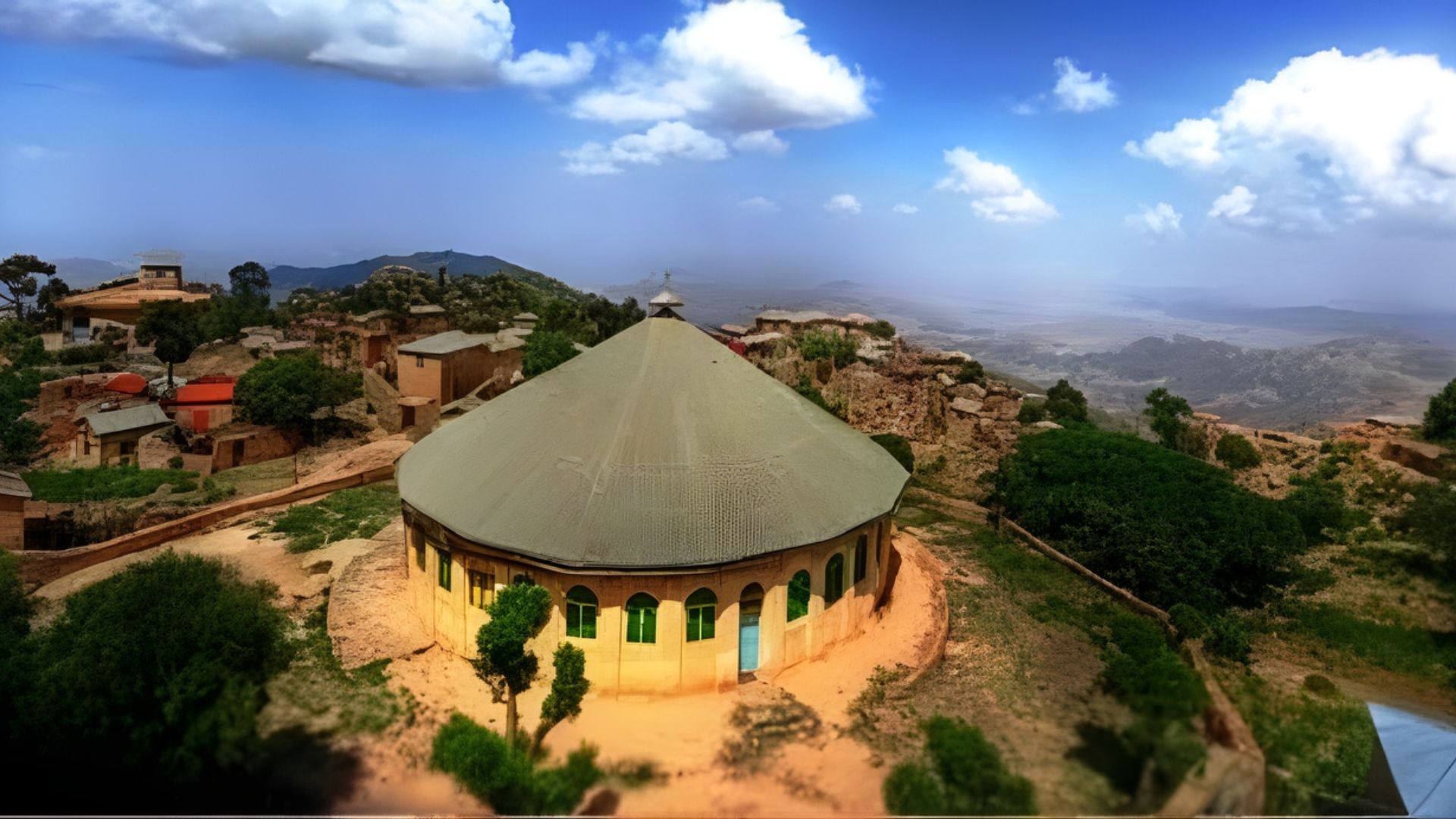Eritrea is one of the Eastern African countries nestled in the Horn of Africa along the strategic Red Sea coast, is a country of striking diversity, deep historical roots, and enduring resilience. With a population of approximately 3.6 million, Eritrea stands out for its balanced religious landscape and rich cultural mosaic.
Bordered by Sudan, Ethiopia, and Djibouti, Eritrea’s location has long made it a crossroads of civilizations. Its capital, Asmara, is a city of elegance and history, renowned for its well-preserved Italian colonial architecture, lively cafés, and vibrant cultural life.
Eritrea is home to nine officially recognized ethnic groups, with the Tigrinya (55%) and Tigre (30%) forming the majority. Other groups include the Saho, Afar, Kunama, Bilen, Beja, Nara, and Rashaida. The country maintains a rare religious equilibrium: 49% Christian, 49% Muslim, and 2% adhering to other beliefs, reflecting a tradition of co-existence.

-Debre Bizen- Orthodox Tewahedo Church monastery
Eritrea’s economy is primarily state-controlled, with key sectors including agriculture, mining, and fishing along its Red Sea coast. However, international sanctions and limited foreign investment have posed significant challenges. These constraints have led many Eritreans to migrate to neighbouring countries such as Kenya and Uganda, where they have become active in business and construction. Notably, the Eritrean Orthodox Church in Kampala is considered one of Uganda’s finest, symbolizing the community’s cultural and spiritual contributions. They celebrate Christmas in January, as per the Julian calendar.
Eritreans are celebrated for their hospitality, resilience, and strong national identity. The country’s cultural heritage is a blend of African, Arab, and Italian influences, expressed through its cuisine, music, and traditions. Languages spoken include Tigrinya, Tigre, Arabic, and several indigenous tongues.
Eritrea’s modern history is marked by a long struggle for sovereignty. After being an Italian colony (1889–1941) and a British protectorate, Eritrea was federated with Ethiopia in 1952. The Eritrean War of Independence, led by the Eritrean People's Liberation Front (EPLF), lasted three decades (1961–1991). Eritrea achieved de facto independence on May 24, 1991, and formal independence following a UN-supervised referendum on May 24, 1993.
Though tourism is limited due to strict visa policies and infrastructure challenges, Eritrea offers unique destinations:
1. Asmara – A city of art deco architecture and cultural charm
2. Massawa – A historic port city with Ottoman and Italian buildings
3. Dahlak Archipelago – Pristine islands ideal for diving and snorkelling
4. Keren – A market town known for camel markets and colonial-era charm
5. Qohaito – Ancient ruins and rock art sites that echo Eritrea’s deep past
Founded in 1350, Debre Bizen monastery is considered the most significant monastery of the Eritrean Tewahedo Orthodox Church, which is located on the top of Debre Bizen mountain close to the Nefasit town located in the Northern Red Sea Region of Eritrea. As one of the most influential monasteries in Eritrea, its library contains various old and valuable manuscripts written in an Eritrean language called Geez.
Eritrea hosts a small but impactful Indian expatriate community, mainly involved in education, medicine, and business. Historical ties date back to the colonial era when Indian professionals were invited to contribute to Eritrean society. Though modest in size, the Indian community continues to play a meaningful role in the country’s development.
Read more:https://cnewsliveenglish.com/news/37004/ethiopia-cradle-of-civilization-and-spiritual-majesty-tt